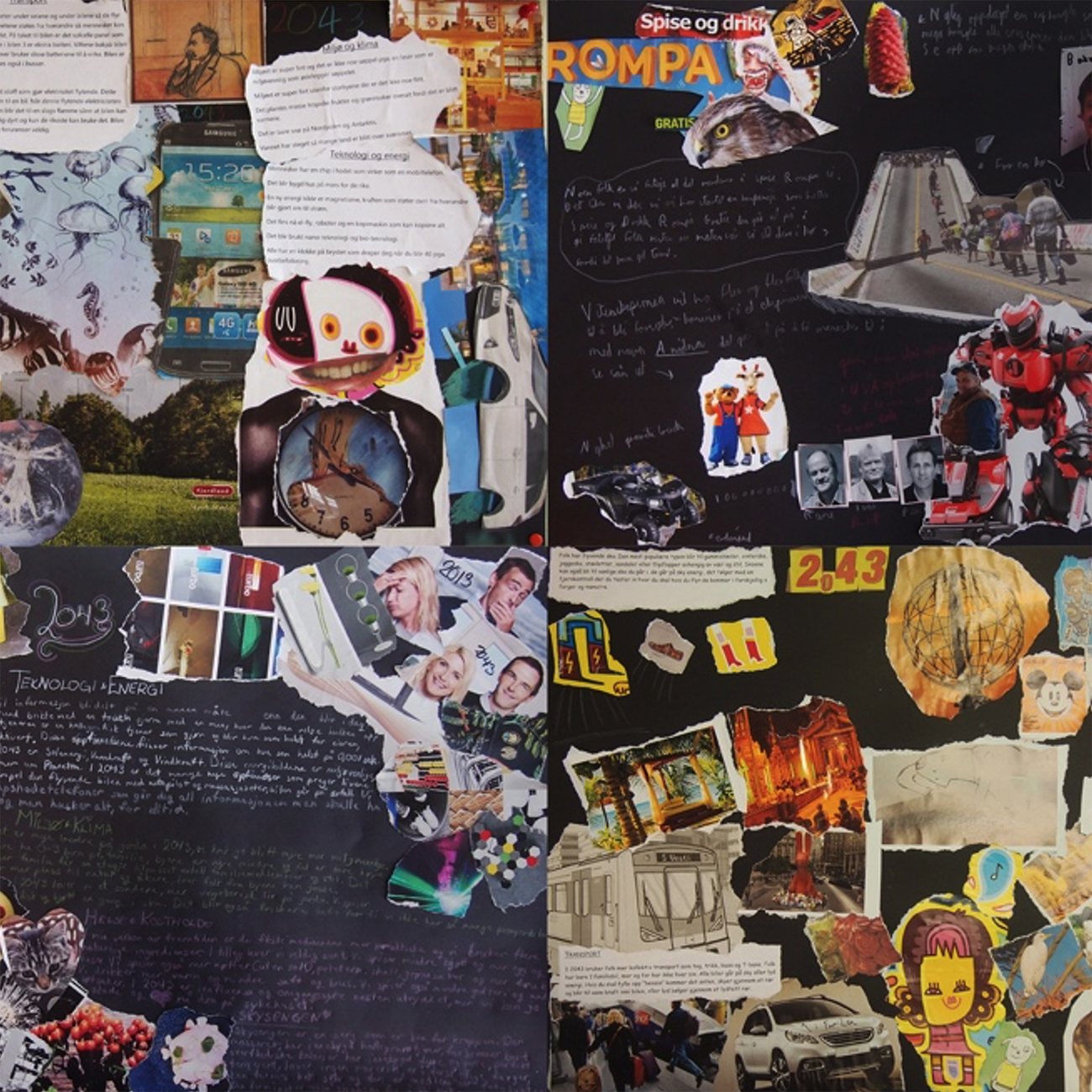Complexity, interdisciplinarity and design literacy
DOI:
https://doi.org/10.7577/formakademisk.4640Emneord (Nøkkelord):
Interdisciplinarity, general design education, future scenarios, design literacy, design thinkingSammendrag
In today’s complex world, a variety of perspectives are needed to better understand and solve challenges. For decades, global organisations and researchers have pointed to interdisciplinarity as a way forward for educational systems. Educational research offers great possibilities and gains for students involved in interdisciplinary teaching and learning processes, and the interdisciplinary nature of design thinking and practice can play a vital role in interdisciplinary general education. This paper explores how future scenario-building, as part of general design education, can serve as a framework for inter-disciplinarity in general education and contribute to a better understanding of complex problems, challenges and design literacy.
Referanser
Barnett, R. (2012). Learning for an unknown future. Higher Education Research & Development, 31(3), 65–77. https://doi.org/10.1080/07294360.2012.642841
Boradkar, P. (2010). Design as problem solving. In R. Frodeman (Ed.), The Oxford handbook of interdisciplinarity (pp. 273–287). Oxford University Press.
Buch-Hansen, H., & Nielsen, P. (2005). Kritisk realisme [Critical Realism]. Roskilde Universitetsforlag.
Capper, M. (2004). Scenarios as a design and product planning tool. Innovation, (Summer), 34–39.
Cross, N. (2011). Design thinking. Berg. https://doi.org/10.5040/9781474293884
Derbellay, F., Moody, Z., & Lubart T. (2017). Creativity, design thinking and interdisciplinarity. Springer. https://doi.org/10.1007/978-981-10-7524-7
Dunne, A., & Raby, F. (2013). Speculative everything: Design, fiction, and social dreaming. MIT Press.
Fuad-Luke, A. (2009). Design activism. Beautiful strangeness for a sustainable world. Earthscan.
Klein, J. T. (2010). A taxonomy of interdisciplinarity. In R. Frodeman (Ed.), The Oxford handbook of interdisciplinarity (pp. 15–30). Oxford University Press.
Malpass, M. (2017). Critical design in context. History, theory, and practices. Bloomsbury. https://doi.org/10.5040/9781474293822
Marzano, S. (2005). Past tense, future sense. Competing through creativity: 80 years of design at Philips. BIS Publishers.
McNiff, J. (2013). Action research. Principles and practice (3rd ed.). Routledge. https://doi.org/10.4324/9780203112755
Nielsen, L. M. (2013). Visualising ideas: A camera is not enough. In J. B. Reitan, P. Lloyd, E. Bohemia,
L. M. Nielsen, I. Digranes, & E. Lutnæs (Eds.), Design learning for tomorrow. Design education from kindergarten to PhD. Proceedings of the 2nd International Conference for Design Education Researchers. 14-17 May 2013, Oslo, Norway, (pp. 2080-2089). ABM media. https://hdl.handle.net/10642/1975
Nielsen, L.M. & Brænne, K. (2013). Design literacy for longer-lasting products. Studies in material thinking, 9, 1–9. https://hdl.handle.net/10642/1871
Paul, R. W. (1993). The logic of creative and critical thinking. The American Behavioral Scientist, 37(1), 21–39. https://doi.org/10.1177/0002764293037001004
Ringvold, T. A. (2014) Bygg din egen fremtid. Fremtidsscenariobygging i faget kunst og håndverk [Build your own future. Future scenario building in the Norwegian school subject of Art and Crafts. Educational possibilities and civic ethical perspectives] (Master thesis, Høgskolen i Oslo og Akershus [Oslo and Akershus University College]). http://hdl.handle.net/10642/2114.
Ringvold, T.A. (2019) Scenariobygging, fremtidsfortellinger, kritisk tenkning og medieutvikling [Scenario building, future stories, critical thinking and media development]. Paper presented at the Network Conference for Norwegian design, art and craft education in higher education. University of South-East Norway, Notodden, 21. – 22. january, 2019.
Science Education Resource Centre. (2017). Why teach with an interdisciplinary approach. htttps://serc.carleton.edu/econ/interdisciplinary/why.html
Thorpe, A. (2007). The designer’s atlas of sustainability. Island Press.
UNESCO. (1986). Interdisciplinarity in general education. A study by Louis d'Hainaut following an International Symposium on Interdisciplinarity in General Education held at UNESCO Headquarters from 1 to 5 July 1985. www.unesco.org/education/pdf/31_14.pdf
Willis, A. M. (2005). Editorial: Scenarios, futures and design. Design Philosophy Papers, 3(1), 1-7. https://doi.org/10.2752/144871305X13966254124077
Wilkinson, L. (2009). How to build scenarios. www.wired.com/wired/scenarios/build.html

Nedlastinger
Publisert
Hvordan referere
Utgave
Seksjon
Lisens
Opphavsrett 2021 Tore Andre Ringvold , Liv Merete Nielsen

Dette verket er lisensiert under Creative Commons Attribution-NoDerivatives 4.0 International License.
- Forfatteren(e) beholder sin opphavs- og kopieringsrett til eget manuskript, men gir tidsskriftet varig rett til 1) å fremføre manuskriptet for offentligheten i den opprinnelig publiserte digitale form, og 2) å registreres og siteres som første publisering av manuskriptet.
- Forfatteren må selv forvalte sine økonomiske kopieringsrettigheter overfor eventuell tredjepart.
- Tidsskriftet gir ingen økonomisk eller annen kompensasjon for innsendte bidrag, medmindre det er gjort særskilt avtale om dette med forfatteren(e).
- Tidsskriftet plikter å arkivere manuskriptet (inklusive metadata) i den opprinnelig publiserte digitale form, i minst ett dertil egnet åpent tilgjengelig langtidsarkiv for digitalt materiell, som for eksempel i de norske universitetenes institusjonsarkiv innen rammen av NORA-samarbeidet.
Verket vil bli publisert OpenAccess med en Creative Commons 4.0-lisens som tillater alle å lese, dele og tilpasse innholdet, også kommersielt, under lisensvilkårene:
Dette verket må tilskrives/ krediteres på riktig måte, en lenke må gis til CC-BY 4.0-lisensen, og endringer som er gjort må angis på en rimelig måte, men ikke på noen måte som antyder at lisensgiveren støtter deg eller din bruk.



